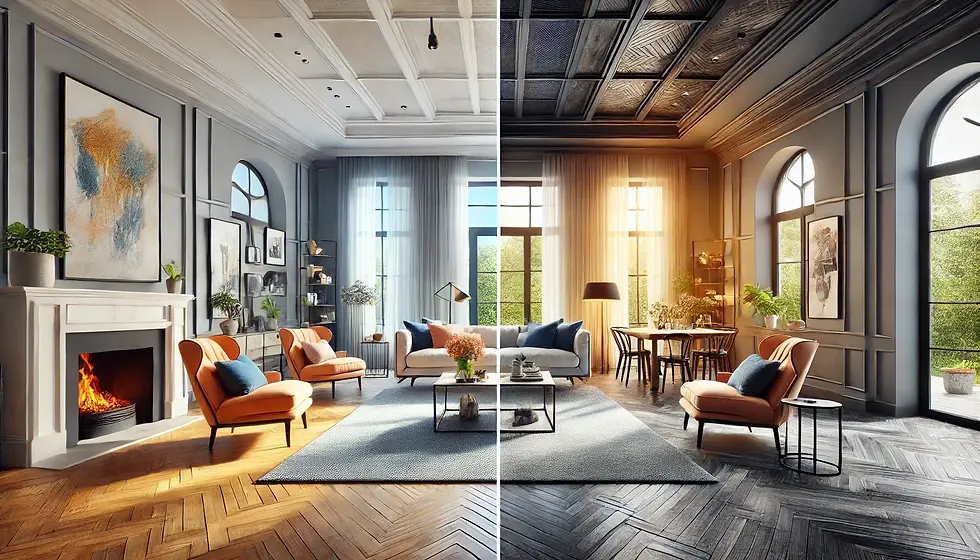Flambient vs HDR Real Estate Photography: Which is Better?
- Richard Hess
- Nov 23, 2024
- 3 min read
In the world of real estate photography, one question pops up frequently: Flambient or HDR—which is better? Both techniques have their merits, and the choice often depends on the photographer's style, the property, and the desired outcome. In this post, we’ll break down the advantages and disadvantages of both methods and help you determine which might work best for your real estate imaging needs.
Before diving into comparisons, let’s look at some example images.

Example Comparison
I recently shot a property using both techniques, and here’s how they compare:
Image A: Flambient (flash + ambient blending)
Image B: Auto Merged HDR
Image C: Hand Blended HDR
Take a moment to decide which image you prefer, and let’s see how they stack up!
Flambient Photography
What it is:Flambient combines flash photography with ambient light blending. By using a flash to overpower existing light, you can eliminate color casts and achieve clean, accurate colors. The ambient light is then blended back during editing to maintain a natural look.
Advantages:
Accurate Colors: Flash ensures colors are true to life by reducing unwanted color casts.
High Level of Control: The photographer determines how much flash or ambient light to include during blending.
Professional Appearance: Produces clean, polished images that stand out in high-end listings.
Disadvantages:
Requires More Equipment: Flash units and modifiers add to the gear investment.
Time-Intensive On-Site: Adjusting lighting setups can take longer.
HDR Photography
What it is:HDR (High Dynamic Range) photography involves capturing multiple exposures (bracketed shots) and merging them during post-processing to create an image with balanced lighting and detail.
Advantages:
Quick and Simple: Shooting bracketed exposures is straightforward and requires minimal on-site setup.
No Additional Gear: You don’t need external lighting equipment—just your camera.
Great for Beginners: A relatively easy technique to learn and implement.
Disadvantages:
Color Accuracy Issues: Ambient light can lead to color casts, especially in rooms with mixed light sources.
The ‘HDR Look’: Auto-merged HDR images can look over-processed or flat if not edited carefully.
Hand Blended HDR
What it is: A more refined version of HDR where the photographer manually blends multiple exposures in editing software to achieve a natural look.
Advantages:
Greater Control: Allows selective use of specific exposures to create a more polished image.
Improved Quality: Eliminates the over-processed appearance of auto-merged HDR.
Disadvantages:
Time-Consuming: Requires significant editing time compared to flambient or auto HDR.
Still Relies on Ambient Light: Cannot match the color accuracy provided by flash.
Which Method is Best?
My Opinion:While all three methods can yield great results, I believe Flambient Photography has the edge for real estate imaging. The combination of flash and ambient blending offers:
The cleanest colors
Superior control over lighting
A polished, professional appearance
While it requires more effort on-site, the results justify the investment—especially for high-end listings where first impressions matter most.
That said, there’s no one-size-fits-all answer. Experimenting with these techniques can help you find the workflow that best suits your needs and delivers the results your clients love.
Conclusion
At Hess Imaging, we use both flambient and HDR techniques depending on the property and client preferences. Whether it’s a luxury home requiring precise color accuracy or a fast turnaround for a mid-range listing, we tailor our approach to deliver exceptional results.
What do you think? Do you have a favorite method? Let us know in the comments below!
📧 Contact Us: hessimaging@outlook.com🌐 Visit Us: www.hessimaging.com



Comments